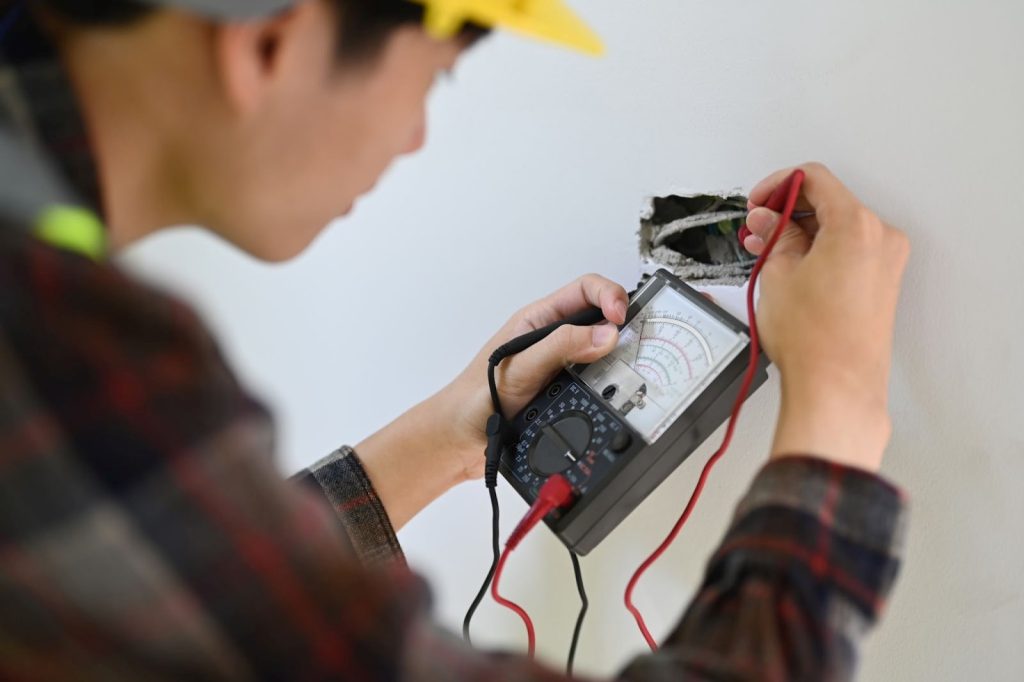Legionella is a type of bacteria that can cause a severe respiratory infection known as Legionnaires’ disease. The bacteria can be found in water sources, such as hot tubs, cooling towers, and plumbing systems. But can Legionella testing be performed on air samples as well?
Legionnaires’ disease outbreaks have been linked to contaminated water systems in various settings, including hospitals, hotels, and cruise ships. Testing for Legionella in water samples is a common practice to identify potential sources of infection. However, there is also a growing concern about the transmission of Legionella through aerosolized droplets in the air.
Given the potential risk of airborne transmission, it is crucial to determine whether Legionella testing can be effectively conducted on air samples. Understanding the feasibility of such testing can help in implementing appropriate prevention and control measures to mitigate the risk of Legionella-related infections. In this article, we explore the current knowledge and practices surrounding Legionella testing on air samples.
Key Takeaways
- Legionella testing on air samples is crucial for preventing outbreaks of Legionnaires’ disease.
- Sampling the air for Legionella bacteria is an essential method in identifying potential sources of contamination.
- Traditional culture-based methods, molecular methods, and passive methods are used for Legionella testing on air samples.
- Factors such as temperature, humidity, airflow patterns, proximity to contamination sources, and sampling duration can affect the detection of Legionella in air samples.
Legionella: A Hidden Danger in Your Water
Legionella is a type of bacteria that can cause a severe respiratory illness known as Legionnaires’ disease. It is typically found in water sources, such as cooling towers, hot tubs, and plumbing systems, where it can multiply and become airborne in small water droplets.
When people inhale contaminated droplets, they can develop symptoms ranging from mild flu-like symptoms to severe pneumonia. Legionella bacteria thrive in warm water environments and can be particularly problematic in buildings with complex water systems. Preventive measures, such as regular maintenance and water treatment, are crucial to minimizing the risk of Legionella outbreaks.
The Importance of Legionella Testing
Legionella testing plays a pivotal role in upholding public health and safety by identifying and mitigating the risks associated with Legionnaires’ disease. Regular testing not only ensures compliance with industry regulations but also proactively safeguards individuals from potential exposure to this harmful bacterium.
Here are benefits of Legionella testing:
- Public Health Protection: Legionella testing ensures that water systems in various settings are free from the bacteria, safeguarding the health of individuals who could be exposed to contaminated water droplets.
- Preventing Outbreaks: Regular Legionella tests help prevent outbreaks of Legionnaires’ disease by identifying and addressing potential contamination sources before they lead to widespread infections.
- Compliance with Codes of Practice: Many industries, such as hospitality and healthcare, are required to adhere to specific codes of practice that mandate routine Legionella testing as part of maintaining safe environments.
- Vulnerable Individuals: Legionella poses a greater risk to individuals with compromised immune systems, making routine testing crucial in settings like hospitals, care homes, and other healthcare facilities.
- Early Detection: Legionella tests enable early detection of bacterial presence, allowing timely intervention and implementation of necessary control measures to prevent the bacteria from proliferating.
- Risk Management: Legionella testing forms a core component of effective risk management strategies, ensuring that potential sources of contamination are identified and managed appropriately.
- Legal and Ethical Responsibility: Establishments have a duty to ensure the safety of their patrons and occupants, and routine Legionella testing fulfills this duty of care.
- Peace of Mind: Legionella testing provides peace of mind to both facility managers and the public, knowing that measures are in place to keep people safe from potential Legionnaires’ disease risks.
Legionella risk assessment services
Using Water Samples To Test For Legionella
Regular testing of water samples is a tried and tested method for assessing the risk of Legionella contamination in various settings, particularly in artificial water systems like cooling towers, hot tubs, and plumbing networks. Legionella, including the species L. pneumophila, can proliferate in water sources and become a potential source of infection when transmitted through airborne water droplets.
Cold water tank temperatures and complex water systems can further facilitate their growth. Legionella testing, often performed through microbiological methods, including culture-based techniques and molecular assays, such as PCR, aims to detect the presence of specific strains like Legionella bozemanii and Legionella micdadei. This proactive approach is crucial for Legionella risk management and public health, as outbreaks of Legionnaires’ disease can be severe.
Regular water sampling from these systems helps identify contamination sources, enabling timely interventions to mitigate the spread of the bacteria. While blood tests can diagnose infections in individuals, water sampling remains a fundamental tool in preventing outbreaks, as it aligns with the duty of care to maintain safe environments. Testing laboratories specializing in microbiology and clinical microbiology play a pivotal role in analyzing these samples and supporting effective Legionella risk management strategies.
Using Air Samples To Test For Legionella
Testing for Legionella using air samples involves a specialized approach to assess the presence of airborne water droplets containing the bacteria. Since Legionella can become aerosolized and transmitted through the inhalation of contaminated droplets, air sampling is a valuable method for evaluating the risk of Legionella exposure.
To conduct air sampling for Legionella, various techniques can be used, such as impaction samplers, which impact particles onto a collection medium that traps particles in a liquid solution. These samples are then analyzed through microbiological methods, including culture-based techniques and molecular assays, to identify the presence of Legionella bacteria.
Air sampling for Legionella is particularly useful for evaluating the effectiveness of control measures and preventive strategies. By detecting increased levels of airborne Legionella, appropriate actions can be taken to adjust water treatment procedures, improve ventilation, and minimize the risk of Legionnaires’ disease outbreaks. Incorporating air sampling into Legionella risk management strategies provides valuable insights into the potential transmission of the bacteria through airborne routes, enabling proactive measures to protect public health and ensure safe environments.
How is Legionella transmitted and where is it commonly found?
Methods for Legionella Bacteria Testing on Air Samples
Recent research has demonstrated that air sampling can provide valuable insights into the presence and concentration of Legionella bacteria in the environment. Legionella testing on air samples involves various methods to accurately detect and quantify the bacteria. Traditional culture-based methods are commonly used for Legionella testing, where air samples are collected onto agar plates or filters and incubated to promote bacterial growth. However, this method is time-consuming and may underestimate the true concentration of Legionella.
In recent years, molecular methods have gained popularity due to their higher sensitivity and specificity. These methods involve extracting DNA or RNA from air samples and using techniques such as polymerase chain reaction (PCR) or quantitative PCR (qPCR) to amplify and detect specific Legionella genes. This allows for rapid detection and quantification of the bacteria, even at low concentrations.
Passive methods, such as settling plates or impaction samplers, are also commonly used for Legionella testing on air samples. Settling plates are exposed to the environment for a certain period of time, allowing airborne particles including Legionella bacteria to settle onto the surface. Impaction samplers use a high-velocity airstream to impact aerosolized particles onto a collection medium.
Understanding these different methods for Legionella testing on air samples is crucial in ensuring effective control of water sources that harbor this pathogenic bacterium. Factors affecting Legionella detection in the air include environmental conditions such as temperature, humidity, airflow patterns, proximity to potential sources of contamination, and sampling duration.
Factors Affecting Legionella Detection in the Air
The accurate detection of Legionella bacteria in air samples is influenced by a range of factors that dictate the presence and concentration of these potentially harmful microorganisms. Understanding these factors is crucial in assessing the reliability of airborne Legionella detection methods and their implications for public health protection.
Aerosolization Rates
Aerosolization rates play a critical role in determining the concentration of Legionella bacteria detected in the air. When water droplets containing the bacteria are released from a contaminated water source, such as cooling towers or domestic water systems, their efficiency of becoming aerosolized influences their presence in the air.
Legionella species, particularly those like Legionella pneumophila, can become airborne when these droplets are dispersed, potentially leading to inhalation by individuals. The extent to which these droplets are aerosolized impacts the likelihood of Legionella detection in air samples, thus affecting the accuracy of assessing the risk of exposure and the need for preventive measures.
Environmental Conditions
Environmental conditions such as water temperature, humidity, and airflow patterns exert a significant influence on the detection of Legionella bacteria in air samples. The bacteria in water systems can become aerosolized and suspended in the air as tiny water droplets. These conditions determine the survival, dispersion, and transport of these droplets, ultimately affecting their presence in the air.
Higher temperatures and humidity levels can promote the aerosolization of Legionella-containing water droplets, increasing the likelihood of detection in environmental samples. Airflow patterns further dictate the movement of these droplets, potentially influencing their concentration in the air and the accuracy of Legionella detection assessments.
Water Sources
The type of water system in place plays a significant role in Legionella detection in air samples. In water systems with stagnant water or areas prone to low flow, such as dead-end pipes or sections with low usage, the risk of bacterial contamination, including Legionella, can be elevated. Stagnant water provides an environment conducive to bacterial growth.
When such water contains Legionella, the potential for aerosolization and subsequent detection in the air increases. The concentration of Legionella in water within specific system configurations directly impacts the likelihood of its transmission through airborne droplets, influencing the effectiveness of detection efforts and the assessment of contamination risks.
Legionella Risk Assessment
If you suspect your water system might be contaminated, contacting an expert is essential. Legionella Risk and PAT, the top Legionella risk assessment service in Scotland, offers thorough evaluations of water systems to identify potential Legionella contamination risks.
Our expert team conducts detailed inspections of various properties, assessing factors like water system design and maintenance practices. We provide insights that help ensure the safety of your water systems as well as compliance with regulations, and the prevention of health risks associated with Legionella bacteria.
Frequently Asked Questions
What Are the Symptoms of Legionella Infection in Humans?
Legionella infection in humans can cause symptoms such as high fever, cough, shortness of breath, muscle aches, and headaches. Prompt diagnosis through testing is crucial for effective treatment and prevention of further spread.
Can Legionella Bacteria Be Found in Water Sources Other Than Air Conditioning Systems?
Yes, Legionella bacteria can be found in water sources other than air conditioning systems. They can also be present in hot tubs, showers, and even natural bodies of water like lakes and rivers.
Are There Any Specific Regulations or Guidelines for Legionella Testing in Air Samples?
Yes, there are specific regulations and guidelines for Legionella testing in air samples. These include sampling methods, laboratory techniques, and reporting requirements to ensure accurate detection of Legionella bacteria in the air.
How Long Does It Typically Take to Receive Legionella Testing Results for Air Samples?
Typically, you can expect to receive Legionella testing results for air samples within a few days. However, the exact time may vary depending on the laboratory’s workload and the specific testing methods used.
Do Different Types of Air Sampling Methods Yield Different Levels of Accuracy in Legionella Detection?
Different types of air sampling methods yield varying levels of accuracy in detecting Legionella. Factors such as the collection device, sample volume, and analysis technique can influence the results.


